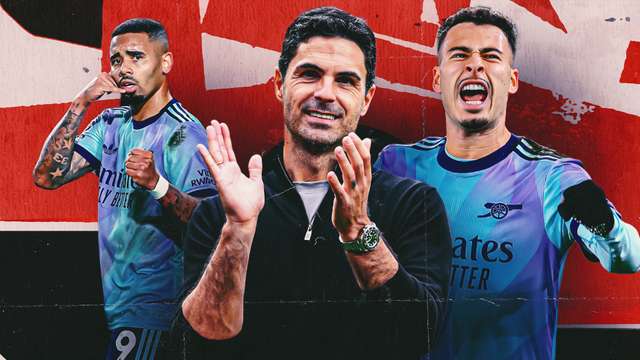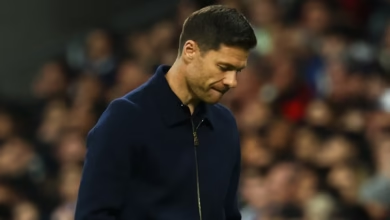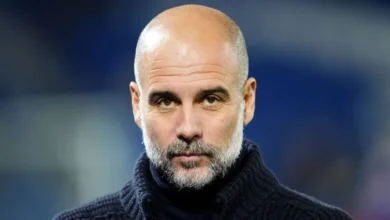Arsenal Advance in Benjamin Sesko Transfer Talks: The €100 Million Striker Saga Unfolds

The summer transfer window has barely begun, yet Arsenal are already making significant moves in the market. According to renowned transfer journalist Fabrizio Romano, the Gunners have officially opened talks with RB Leipzig regarding the acquisition of Benjamin Sesko, the highly-rated Slovenian striker who has emerged as one of Europe’s most coveted attacking talents. With a release clause valued at €100 million, this potential transfer represents not just a statement of intent from Arsenal, but also a crucial step in their ongoing evolution under Mikel Arteta
Romano’s latest update provides crucial insight into where Arsenal stand in their pursuit of the 22-year-old forward. Speaking on his YouTube channel, the Italian journalist confirmed that concrete discussions have already taken place between Arsenal and RB Leipzig, marking a significant escalation from mere interest to active negotiations. The talks have involved multiple parties, including Leipzig’s management, Sesko’s representatives, and Arsenal’s transfer team, indicating the seriousness of all parties involved.
What makes this development particularly intriguing is the comprehensive nature of Arsenal’s approach. Rather than simply expressing interest, the Gunners have begun the complex process of understanding every aspect of a potential deal. This includes evaluating Sesko’s current contract terms, assessing his market value independent of his release clause, and determining the financial structure that would make the transfer feasible for all parties involved.
The fact that Arsenal are willing to engage in such detailed discussions suggests they view Sesko as more than just another target on their shortlist. Instead, he appears to represent their primary solution to a striker shortage that has persisted despite their recent success. The North London club’s methodical approach reflects lessons learned from previous transfer windows, where rushed decisions or incomplete due diligence led to missed opportunities or suboptimal acquisitions.
The pursuit of Benjamin Sesko must be understood within the broader context of Arsenal’s tactical evolution and strategic objectives. Under Mikel Arteta, the team has transformed from a side struggling for European qualification to genuine title contenders capable of challenging Manchester City’s domestic dominance. However, one consistent weakness has emerged throughout this transformation: the lack of a proven, elite-level striker capable of converting the numerous chances the team creates.
Gabriel Jesus, while technically gifted and tactically astute, has struggled with consistency in front of goal since his arrival from Manchester City. His injury record has also proved problematic, leaving Arsenal short of options during crucial periods of the season. Eddie Nketiah, despite showing promise in certain matches, has not demonstrated the consistent quality required for a team with championship aspirations. The absence of a reliable goalscorer has arguably cost Arsenal valuable points in their recent title challenges, making the acquisition of a top-class striker their most pressing priority.
Sesko represents the profile of player Arsenal have been seeking: young enough to develop further, already proven at the highest level, physically imposing, and tactically flexible enough to fit into Arteta’s system. His ability to play across the front line, combined with his clinical finishing and aerial prowess, makes him an ideal candidate to address Arsenal’s attacking deficiencies while providing the tactical flexibility that Arteta values in his squad construction.
Benjamin Sesko’s rapid rise through European football has been nothing short of remarkable. Standing at 6’5″, the Slovenian international combines the physical attributes traditionally associated with target men with the technical skills and movement patterns of modern forwards. His development at RB Leipzig has been particularly impressive, showcasing his ability to adapt to the demands of elite-level football while maintaining the hunger and work ethic that initially caught scouts’ attention.
During the most recent season, Sesko demonstrated his growing maturity as a footballer by scoring 21 goals across 45 appearances in all competitions. These numbers, while impressive in isolation, tell only part of the story. His goals came in crucial moments, often when Leipzig needed them most, suggesting the kind of mental fortitude that separates good players from great ones. His 18 goals in 42 domestic appearances represented a significant improvement from previous seasons, indicating an upward trajectory that should continue for several years.
Perhaps most importantly for Arsenal’s purposes, Sesko has proven himself capable of performing in high-pressure situations. His performances in the Champions League and other European competitions have showcased his ability to rise to the occasion against elite opposition. This experience would prove invaluable for Arsenal, who have sometimes struggled in crucial moments against top-tier opponents due to a lack of proven match-winners in their squad.
Internationally, Sesko has been equally impressive for Slovenia, scoring 16 goals in 41 appearances for his national team. His performances at Euro 2024 further enhanced his reputation, demonstrating his ability to perform on the biggest stages while representing his country with distinction. This international experience, combined with his club performances, suggests a player ready to make the step up to one of Europe’s elite clubs
The current negotiations take on additional significance when viewed against the backdrop of last summer’s failed transfer attempt. Arsenal’s pursuit of Sesko twelve months ago appeared to be progressing smoothly, with multiple reports suggesting that a deal was all but complete. The Gunners had engaged in extensive negotiations with both Leipzig and the player’s representatives, seemingly overcoming the various obstacles that typically complicate high-profile transfers.
What made the eventual collapse of those negotiations particularly surprising was the apparent strength of Arsenal’s position. Sesko had reportedly made it clear that he favored a move to the Emirates Stadium over other interested parties, including AC Milan. Meetings with his entourage had gone well, and Arsenal believed they were simply working through the final formalities before completing the signing.
The shock announcement in June 2024 that Sesko would be remaining at Leipzig, followed by his signing of a new contract with the German club, represented a significant setback for Arsenal’s transfer plans. The reasons for this dramatic reversal were never fully explained, though speculation ranged from Leipzig’s improved contract offer to concerns about first-team opportunities at Arsenal. Regardless of the specific factors involved, Arsenal was forced to reassess their striker options and ultimately entered the season without their primary target.
This failed transfer appears to have served as a learning experience for Arsenal’s recruitment team. The current negotiations seem more structured and comprehensive, suggesting that the club has adapted its approach based on the lessons learned from the previous summer’s disappointment. The fact that they have maintained their interest in Sesko despite the setback demonstrates their continued belief in his potential and suitability for their system
Arsenal’s pursuit of Benjamin Sesko takes place within a highly competitive market where multiple elite clubs are seeking similar profiles of players. Chelsea and Manchester United have both been linked with the Slovenian striker, reflecting the general consensus that he represents exceptional value in the current market. This competition creates both challenges and opportunities for Arsenal’s negotiating position.
On one hand, competing interest from other Premier League clubs could drive up Sesko’s valuation and complicate Arsenal’s efforts to secure his signature. Both Chelsea and Manchester United possess significant financial resources and can offer competitive packages in terms of salary and signing bonuses. Manchester United, in particular, might appeal to players seeking guaranteed first-team opportunities, given their current rebuild under their management.
However, Arsenal’s current position offers several advantages in any competitive bidding situation. Their recent success, including consecutive top-four finishes and genuine title challenges, makes them an attractive destination for ambitious players. The prospect of working under Mikel Arteta, whose reputation as a developer of young talent continues to grow, represents another significant selling point. Additionally, Arsenal’s style of play, which emphasizes technical excellence and tactical sophistication, aligns well with Sesko’s skill set and development needs.
The financial aspect of any potential deal also works in Arsenal’s favor. While the €100 million release clause initially appeared prohibitive, Romano’s suggestion that Leipzig might accept a lower fee opens up possibilities for creative deal structures. Arsenal’s recent financial discipline, combined with their substantial revenue streams, positions them well to compete for elite talent without compromising their long-term financial stability.
Mikel Arteta’s tactical system has evolved significantly during his tenure at Arsenal, but certain principles remain constant. The Spanish manager values players who can contribute in multiple phases of play, possess the technical skills to participate in intricate passing combinations, and demonstrate the work ethic required for his high-intensity pressing system. Sesko’s profile suggests he would integrate seamlessly into these tactical requirements while providing the specific qualities Arsenal have been lacking.
In Arsenal’s typical 4-3-3 formation, Sesko would most likely operate as the central striker, though his versatility allows for deployment across the front line when tactical situations demand it. His height and physical presence would provide Arsenal with a different dimension in attack, particularly when dealing with deep-lying defensive blocks that have occasionally frustrated their possession-based approach. The ability to deliver crosses and set pieces to a genuine aerial threat would add another string to Arsenal’s attacking bow.
Perhaps more importantly, Sesko’s movement patterns and understanding of space would complement the creative talents of players like Martin Ødegaard, Bukayo Saka, and Gabriel Martinelli. His ability to create space for others through intelligent runs, combined with his own finishing ability, would enhance Arsenal’s overall attacking output while providing the focal point that their system has sometimes lacked.
Defensively, Sesko’s work rate and pressing intensity align well with Arteta’s demands from his forward players. Modern strikers are expected to contribute significantly to their team’s defensive efforts, and Sesko’s willingness to engage in this aspect of the game would fit seamlessly into Arsenal’s high-energy approach. His presence would also provide additional height and physicality when defending set pieces, an area where Arsenal have occasionally appeared vulnerable.
The financial aspects of any potential Sesko transfer involve complex considerations that extend beyond the initial transfer fee. While his €100 million release clause initially appeared to price him out of most clubs’ reach, Romano’s suggestion that a lower fee might be acceptable creates more realistic possibilities for interested parties, including Arsenal.
The valuation of modern footballers involves multiple factors, including age, contract length, performance metrics, and market demand. At 22 years old, Sesko represents the ideal age profile for a major investment, young enough to improve significantly while already mature enough to contribute immediately. His contract situation at Leipzig, combined with his apparent desire to move to a bigger club, creates leverage for potential buyers in negotiations.
Arsenal’s financial position has strengthened considerably in recent years, thanks to their return to the Champions League and improved commercial revenues. The club’s owners have demonstrated their willingness to invest in the right players, as evidenced by significant expenditures on players like Declan Rice and Kai Havertz in recent transfer windows. However, they have also shown discipline in their spending, avoiding overpaying for players who don’t represent good value.
The potential return on investment from signing Sesko extends beyond his immediate contribution on the pitch. As a young player with significant potential for further development, his transfer value could appreciate substantially if he fulfills his potential at Arsenal. Additionally, his marketability as a young, exciting striker would provide commercial benefits through shirt sales, sponsorship opportunities, and global brand exposure.
While Sesko appears to be Arsenal’s primary striker target, the club has wisely maintained interest in alternative options to avoid the disappointment of last summer’s failed pursuit. Viktor Gyokeres of Sporting CP has emerged as another serious candidate, having enjoyed an exceptional season in Portugal. His goal-scoring record and physical profile make him an attractive option, though he represents a different type of player compared to Sesko.
Victor Osimhen, despite his proven quality and experience at the highest level, appears to be moving toward other destinations, with Chelsea among the clubs reportedly interested in the Napoli striker. His wage demands and transfer fee requirements may have priced him out of Arsenal’s reach, making younger options like Sesko more appealing from both financial and strategic perspectives.
The reported interest in Liam Delap, who appears to be heading to Chelsea, suggests that Arsenal are casting a wide net in their search for striking reinforcements. This comprehensive approach reflects lessons learned from previous transfer windows, where over-reliance on single targets led to disappointment and suboptimal outcomes.
Having multiple options allows Arsenal to maintain negotiating leverage while ensuring they don’t enter another season without adequate striker options. The club’s recruitment team, led by Edu and working closely with Arteta, appears to have developed a clear profile of the type of player they want while remaining flexible enough to adapt to changing market conditions.
Arsenal’s pursuit of Benjamin Sesko fits within a broader transfer strategy that has emerged under Arteta’s leadership. The club has consistently targeted young, high-potential players who can contribute immediately while offering significant room for future development. This approach has yielded impressive results with signings like Gabriel Martinelli, William Saliba, and Martin Ødegaard, all of whom have become crucial first-team players.
The strategy also reflects Arsenal’s position in the football ecosystem. While they cannot compete with the unlimited resources of clubs backed by sovereign wealth funds, they can offer attractive projects to ambitious young players seeking to develop their careers at elite institutions. The combination of Arteta’s coaching reputation, Arsenal’s historic status, and their recent upward trajectory creates a compelling proposition for players in Sesko’s position.
Financial sustainability remains a key consideration in Arsenal’s transfer planning. The club has worked hard to improve their financial position after years of relative austerity, and they cannot afford to make decisions that would compromise their long-term stability. This disciplined approach, while sometimes frustrating for supporters eager for marquee signings, has positioned Arsenal well for sustained success.
The integration of new signings has also improved significantly under Arteta’s management. Players like Declan Rice and Kai Havertz, despite initial skepticism from some quarters, have become integral parts of Arsenal’s system. This track record should provide confidence that Sesko, should he join, would receive the support and tactical guidance necessary to maximize his potential.
The timing of Arsenal’s renewed interest in Benjamin Sesko aligns well with the natural rhythm of the transfer market. Early June represents the optimal period for beginning serious negotiations, allowing sufficient time to complete complex deals before pre-season preparations begin in earnest. The fact that concrete talks have already commenced suggests that Arsenal are prioritizing this transfer and hope to resolve it relatively quickly.
Romano’s indication that “there is still a long way to go” in negotiations suggests that supporters should not expect immediate resolution. Modern transfers of this magnitude involve numerous stakeholders and complex negotiations that can extend over several weeks or even months. The involvement of agents, multiple club officials, and various legal and financial advisors means that even seemingly straightforward deals can become protracted affairs.
However, the early timing of these discussions provides Arsenal with several advantages. Should the Sesko negotiations ultimately prove unsuccessful, there would still be sufficient time to pursue alternative targets without the panic buying that often characterizes the final weeks of transfer windows. Additionally, early completion of major signings allows new players to participate in pre-season preparations, facilitating their integration into the squad and tactical system.
The expectations surrounding any potential Sesko signing must be realistic. While his talent and potential are undeniable, the transition to Premier League football often involves an adjustment period, even for players of exceptional ability. Arsenal supporters, having witnessed similar transitions with recent signings, should be prepared for the possibility that immediate impact might not match long-term potential.
Arsenal’s advanced talks with Benjamin Sesko represent more than just another transfer negotiation; they symbolize the club’s ambition to compete at the highest level of European football. The Slovenian striker embodies the qualities that Arsenal have been seeking: youth, proven ability, tactical versatility, and the potential for significant further development.
The lessons learned from last summer’s failed pursuit appear to have informed Arsenal’s current approach, with more comprehensive planning and realistic expectations tempering the excitement surrounding this potential signing. The competition from other elite clubs only underscores Sesko’s quality and the significance of securing his signature.
Should these negotiations prove successful, Sesko’s arrival would address Arsenal’s most pressing tactical need while providing the foundation for sustained success. His integration into Arteta’s system could unlock new tactical possibilities and provide the clinical finishing that has occasionally been absent in crucial moments.
The financial implications, while significant, appear manageable within Arsenal’s improved economic framework. The potential return on investment, both in terms of on-field success and commercial opportunities, justifies the substantial outlay required to secure one of Europe’s most promising young strikers.
As these negotiations continue to unfold, Arsenal supporters can take encouragement from the proactive approach their club is taking in the transfer market. The early engagement in serious discussions, the comprehensive evaluation of alternatives, and the strategic thinking behind the pursuit all suggest a club operating with clear vision and purpose.
The coming weeks will determine whether Arsenal can finally secure their long-sought striker solution. Benjamin Sesko’s potential arrival would represent not just the filling of a tactical gap, but a statement of intent from a club determined to compete for the highest honors in domestic and European competition. In a transfer market where elite strikers are increasingly rare and expensive, Arsenal’s pursuit of Sesko demonstrates their commitment to the standards required for sustained success at the highest level of football.














